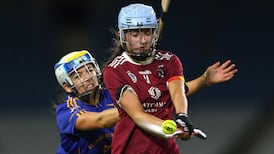In the past, change in the GAA came dropping slow, the association priding itself on being “open to change” but careful and deliberative about its introduction.
Within the last year there have extraordinary changes, admittedly on an extended trial basis but what are the chances of reverting to the status quo after 2020: round-robin formats in the football and hurling championships, All-Ireland finals brought forward and now significant experiments with the rules of football are to be conducted in the coming months.
The tumult around inter-county championship structures, the ongoing club fixtures conundrum, and now thoroughgoing rules changes do however create an image of fires being fought on a number of fronts.
Change is frequently a hard sell in the GAA. Children possessed by demons being driven to church make less of a fuss than the conservative constituency within Gaelic games when confronted with proposed reforms.
For all the protests that there’s nothing wrong with football, the standing committee on the playing rules, who advanced the proposals, laid out an abundance of statistical evidence to support their case.
The most striking figures relate to the growing preponderance of hand passing: 100-plus more per match than seven years ago, based on analysis of 322 fixtures, and a 20 per cent increase in phases involving four or more hand-passes.
The sense last week was that a clean sweep of the proposed trials was unlikely to happen. Yet that – allowing for a significant tweak to the kick-out rule, which came from the meeting rather than the rules committee – was the effective outcome and with a decent majority.
All in all it was an impressive mandate to attempt improvement but there are also caveats.
Whereas the concern about the direction of football is widespread there is a need to separate cause and consequence. Undoubtedly the game has drifted farther and farther from a transfer-based model to a possession-based model and that impacts on its attractiveness. It is estimated that hurling, on the other hand, still manages to create a contest for the ball every 20 seconds.
The rules committee are clearly trying to introduce more of that contesting into football.
Attendance trends
Analysing attendance trends can be difficult because they’re not always dependant on the quality of play but more so on the nature of competitiveness.
Dublin’s domination of the football championship is having the same chilling effect as any serial success, as can be seen from Kilkenny’s four-in-a-row, 2006-2009, and Kerry’s between 1978 and 1981 – with capacity at All-Ireland finals being called into question in all three cases.
Throw in the experimental, protracted quarter-final round robin and spectator-fatigue becomes an issue.
One of the more prominent reservations encountered last week in the build-up to the central council meeting was the impact on the national league. The secondary competition has become more and more important in recent years because it is graded and provides a realistically competitive environment for most counties.
With provincial championships becoming apparently less and less attainable and to date no tiered All-Ireland available, getting promotion in the league and even winning a divisional title is now the most realistic ambition of most inter-county footballers.
Creating a laboratory for the future of football during the spring is clearly a concern for many counties and has been raised by the Gaelic Players Association in their opposition to the rules trial.
Unfortunately, the league is the only feasible environment in which such experiments can be conducted: combining seriousness of elite competition and yet not disrupting the championship.
As a constituency though, inter-county players aren’t the best sounding board for playing rule changes.
Elite athletes
They are for the most part elite athletes whose only concern is to prepare themselves to compete for the top teams in the country. Experimenting with playing rules may be a necessary process to improve the game in the long term but it’s a nuisance for those who have to be the guinea pigs.
Interestingly, in a media statement about the rule changes issued two weeks ago, the views of Gaelic Players Association (GPA) members on the substantive proposals were presented as the main findings, although chief executive Paul Flynn did express strong opposition to the league being used for this type of trial.
The GPA are represented on the rules committee and so their concerns have been heard and effectively so, as two of the five changes – the sin bin and attacking mark – had their support while the kick-out was tweaked to meet their concerns, leaving two that they opposed.
But does it give them a veto on either rule changes or the method of their trialling? No sport grants that sort of power to its participants, let alone the top 2 per cent of them.
It’s worth repeating that these changes are probationary and will be judged at the end of the league and have to go before congress if they are to be incorporated into the rule book on a permanent basis.
Meanwhile, there is also unhappiness within the Club Players Association (CPA) at the failure of a motion from Roscommon, calling for a "blank canvas" approach to the fixtures crisis.
The CPA has a tendency to respond aggressively every time it encounters a setback but the terms of the current complaint – effectively that Croke Park undermined the due consideration of the Roscommon motion by not circulating it in time – illustrates a besetting problem, regardless of the merits of the allegation.
The association is constantly looking for the GAA centrally to address local problems. If the CPA wanted to advocate this proposal effectively why didn’t it get its grassroots members to do so within the other 31 counties? They knew the Roscommon motion was coming.
smoran@irishtimes.com











